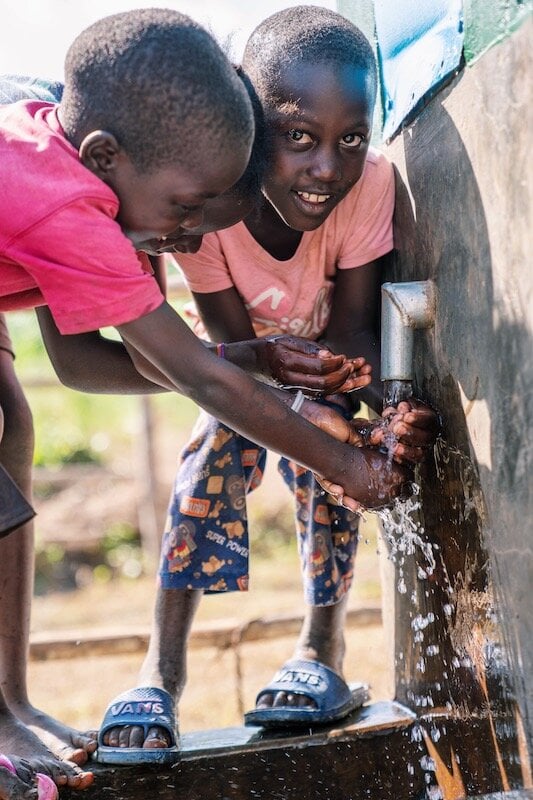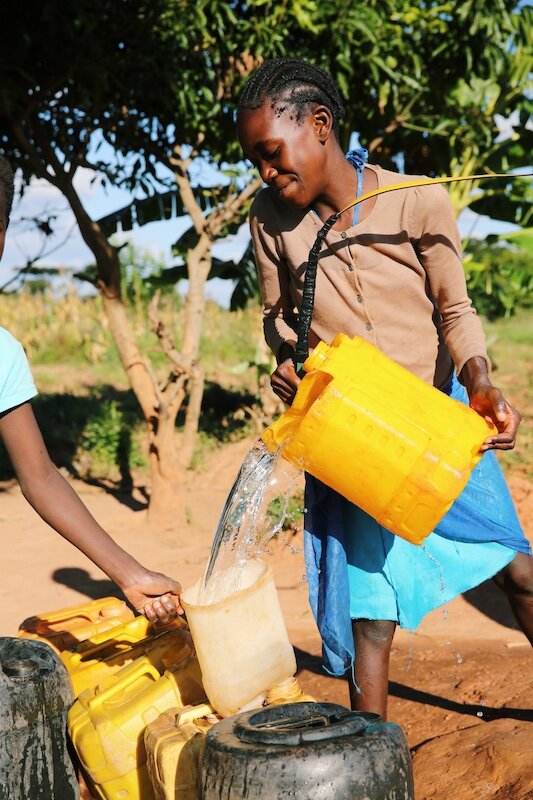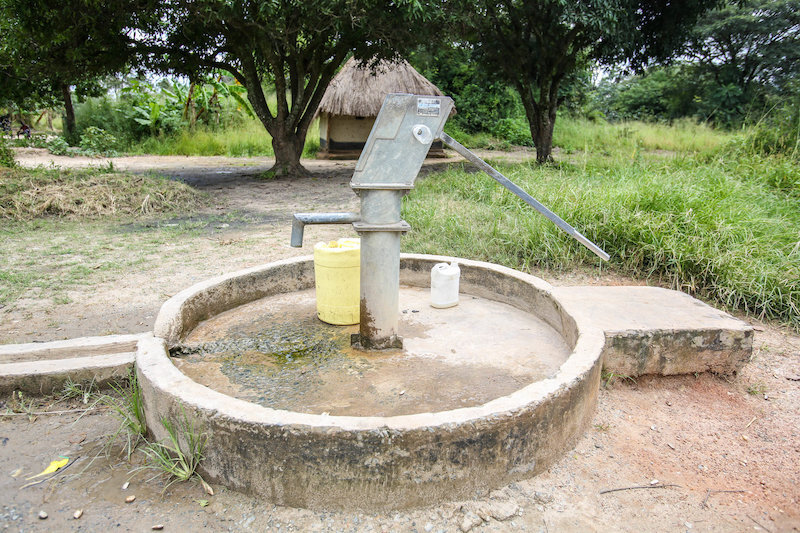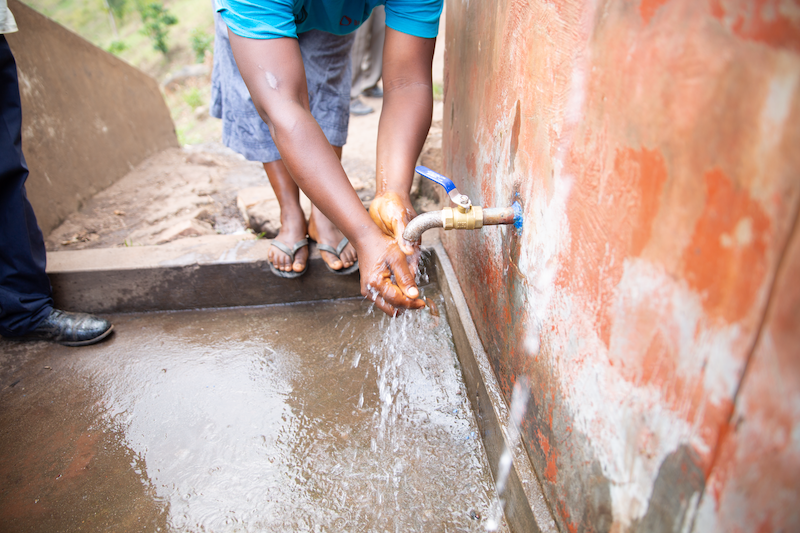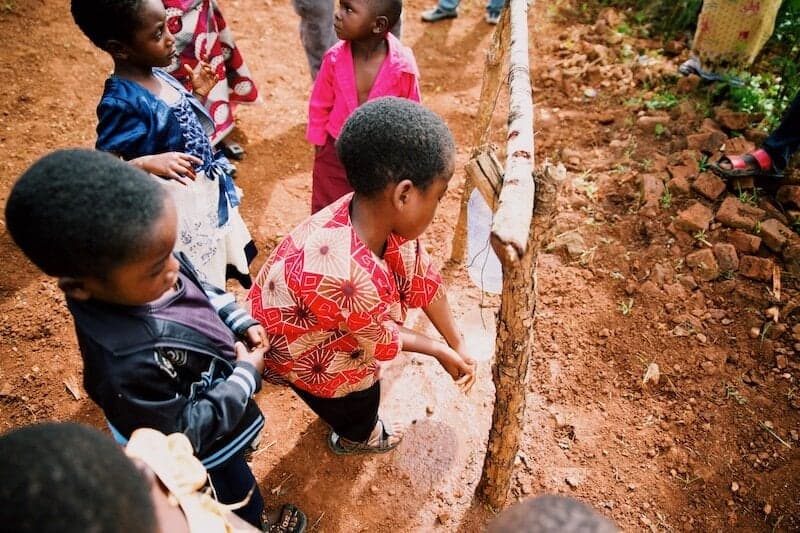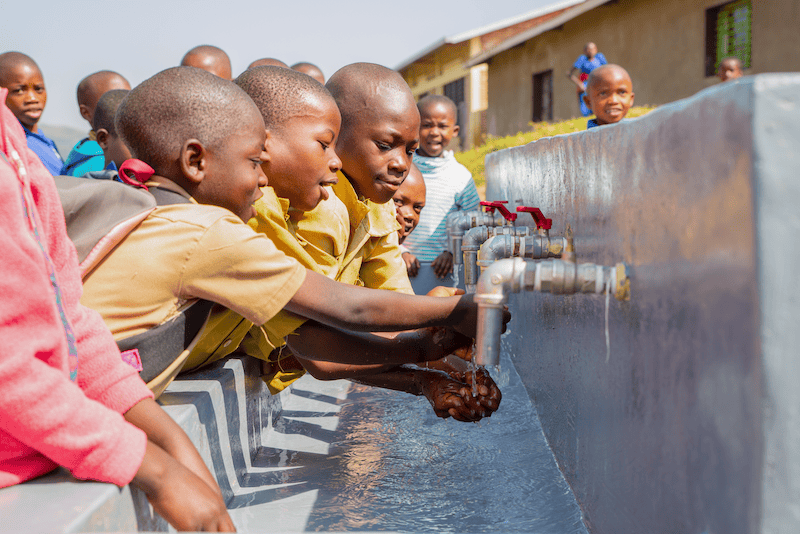Access to clean well water is given little thought because it is something most of us don’t lack here in the Western world. Unfortunately, that is not the case in many areas of sub-Saharan Africa and can often make or break a child’s ability to safely attend school. 40% of the global population lacks access to clean water, and 50% of those people reside in sub-Saharan Africa.
In addition to this, many communities are not located near a water source and individuals spend an average of 33 minutes every day walking to retrieve water…that is often still not safe to drink! Women and girls are disportionately affected by this reality. Our African partners recognize these discrepancies and work tirelessly to guarantee clean water for all in the communities in which they work.
When many of us envision water solutions, the first image that most likely comes to mind is well water, and it is often the most common medium of water distribution. But as we have previously discussed, there are actually many different technologies that can be utilized to obtain clean water!
Partnering WITH Locals
Two necessary caveats must be made before I get into the mechanics of the different water solutions: 1. Blood:Water’s commitment to partnership and 2. the essential nature of hygiene and sanitation programs in correspondence with clean water. From the beginning, Blood:Water has been faithful in holding to its founding principles like deferment to local solutions and leaders.
“When we die to the idea that western organizations with western ideas are the point, we can begin taking on the role of support and service to the true experts in the field. When we die to the idea that we must play the role of the primary hero in the story of Africa’s health development, the real heroes will gain access to the spotlight and in turn, we will see life emerge. We will see communities become more resilient. We will see the spirit of empowerment, agency and investment foster the growth necessary to beat the kinds of illnesses our world is facing today.”
– Dan Haseltine
It is critical that local people are empowered to take the lead in both planning and implementing programs so they are able to perpetuate the change once it is time for them to continue work on their own.
Along with this significant missional value, Blood:Water also sees the importance of providing clean water within a WASH program framework. If you are new to Blood:Water, you may be thinking, what does WASH stand for? Well, WASH is a global standard referring to “Water, Sanitation, and Hygiene” and highlights the essential nature of clean water in tandem with good hygienic and sanitary practices.
Unfortunately, ensuring access to clean water is only half the battle in improving community health. In many rural areas of sub-Saharan Africa, people do not have access to basic hygiene and sanitation tools such as handwashing stations and toilets. So even if they are able to obtain clean water, it can easily become contaminated because people do not have the tools or the knowledge to keep themselves or that water clean.
Thankfully, our local African partners are also implementing holistic programs that encompass all aspects of the WASH principle and providing resources such as drying racks, hand-washing facilities, and pit latrines. With that in mind, here are a few of the creative and intuitive ways our partners are providing clean water for their communities!
What Are the Main Water Solutions?
There are five different types of water points that our partners primarily use. This is not an exhaustive list, and our partners often use a combination of these technologies to most efficiently distribute the best solution for their particular community.
Wells
The most common form of water point is a well…or more specifically, a borehole well. If you wish to learn more in depth about the construction of this type of well, this is a great resource to do so. More generally though, the process of building a borehole well involves 4 basic steps:
-
Choose the appropriate location to drill. This is one of the most important steps and our partners know their surrounding landscape best and the optimal places for construction.
-
Drill the hole in the desired location…most are about 200 ft deep. Casing is put around the top part of the hole to ensure no surface water seeps into the hole.
-
Perform an aquifer test to determine the maximum yield of well water. This helps our partners know how many people will be impacted by the water well.
-
Install a mechanized or hand pump. If the well is extremely deep, a mechanized pump is necessary, because the water is too heavy to be obtained with the hand pump. A simple hand pump borehole well can provide well water for up to 750 people!
Catchment Systems
These are also known as rain harvesting and are a great approach if the surrounding earth is too dry, contaminated, or cannot sustain the structure of the borehole. It involves collecting rainfall off of surfaces (normally roofs), utilizing gutters that run into large containers for storage. This solution has been in use for hundreds of years and is not just for lower-income areas…countries like Australia and Germany have begun to use this method more often as it is cost-effective, environmentally friendly, durable, and extremely straightforward.
Spring Protections
This water point is comparable to the borehole well as they look very similar, but the actual approach and construction are very different.
Instead of accessing water deep in the earth, this method seeks to collect groundwater from natural flowing springs. A spring exists where pressure in the earth forces water in the ground above the surface. This water can escape at one specific point (a concentrated spring), or over a large area (a seepage spring). With installation, water is guided safely into a pipe that connects to a spring box for collection that ensures the water remains uncontaminated.
Filtration and Treatment Systems
Sometimes lack of water or difficulty accessing water is not the main issue; in some communities, water is in great supply, it is just contaminated, even when accessing well water. This is where filtration or some sort of treatment are the most cost-effective choice.
There are multiple ways to guarantee water is properly cleaned: chlorination, solar water disinfection, biosand filtering, and boiling. You can read more about each solution here, but our partners mainly utilize the biosand filter (BSF). It is best for household use, lasts for years, and can be easily put together using locally sourced parts.
The filter is built with a plastic or concrete container which is filled with a specialty mixture of sand and gravel. A thin layer of water rests on top of the sand mixture, and a biofilm is allowed to form (which normally takes about 20-30 days). These physical agents along with the biofilm help to separate harmful bacteria from the pure water.
Tippy Taps
As previously mentioned, for any of these water solutions to be most effective, or honestly effective at all, they must be employed in conjunction with proper hygiene and sanitation techniques. An important first step is to provide handwashing stations. Since the technology needed for plumbing is often too expensive and complicated for rural sub-Saharan African communities, a more manageable solution is needed. This is where tippy taps come into play. They are a simple, yet highly effective way to curb the spread of disease and contamination of clean water.
A five-liter container is placed onto a pole or long stick through its handle and then supported by two other poles on each side. A hole is made on the cap of the container, with a string through it that is also attached to a stick on the ground. A small hole is created somewhere under the cap. When the stick is stepped on, it tips the container over and water flows from the hole. Soap is supplied to ensure hands are properly cleansed. It is contactless, easy to build with materials on hand, and can be effortlessly maintained.
Blood:Water is proud to work with organizations that are creative problem-solvers and do what is best for their communities based on extensive field knowledge and personal experience. With so many inventive ways to provide clean water, we fund our partners in their efforts to reach more children with these life-saving technologies. This will allow children more time to attend school because they will not have to spend half the morning collecting water and will also be more physically and mentally prepared to learn as the risk of disease is greatly reduced.
More Stories:
Categories
